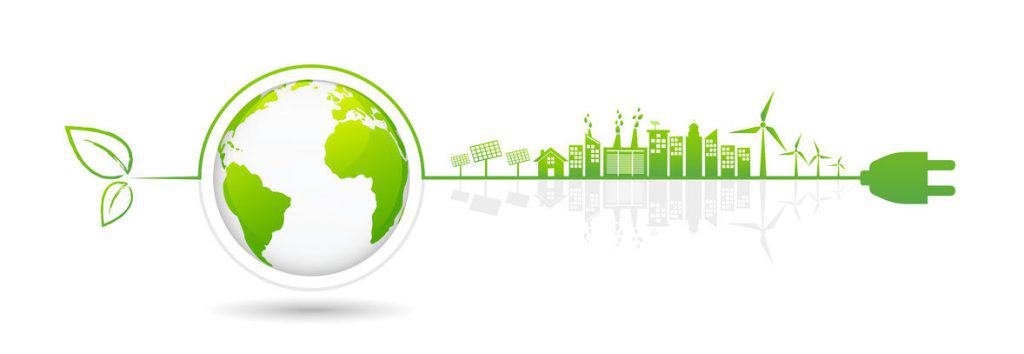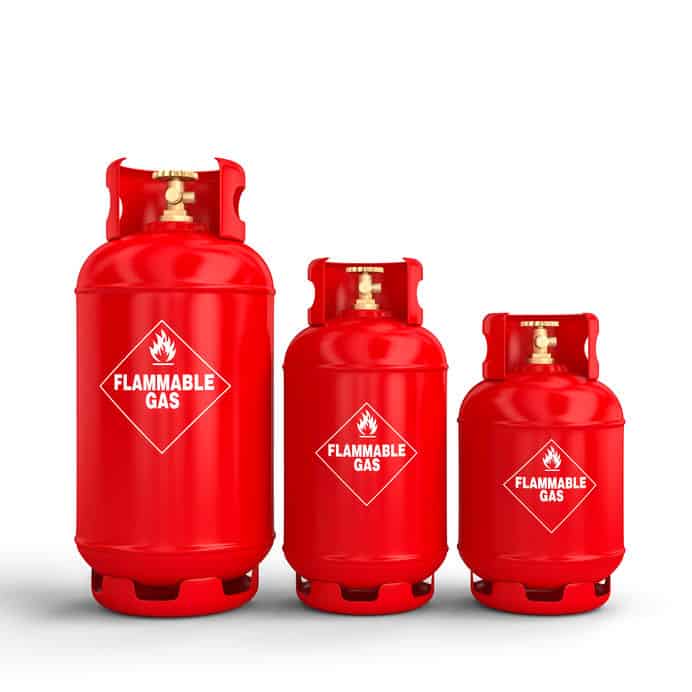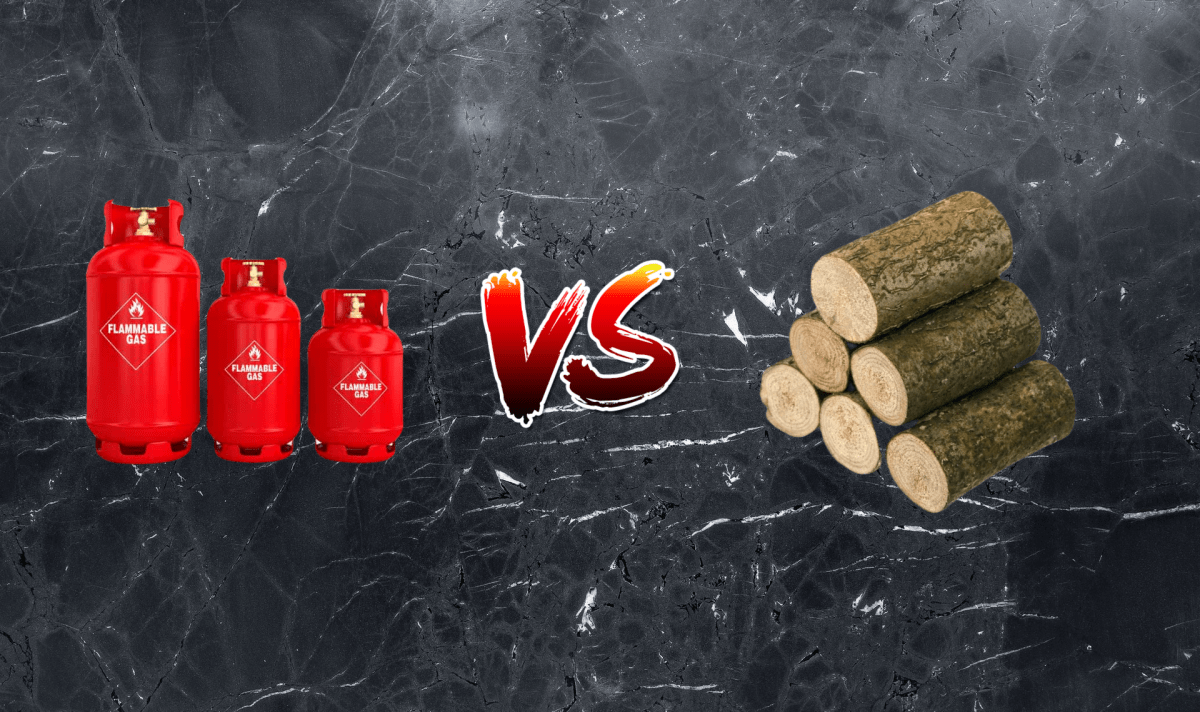Are you planning to create a fire pit for those cozy gatherings at your place?
You might be worried about the environmental impact your fire pit would create.
So we have gathered all that you need to know about both the types of fire pits to help you settle the question: gas or wood?
In short, propane has a smaller environmental impact than burning. This is because wood containers more carbon and emits CO2 in greater quantities. Propane is the clear winner in this regard. However you can still enjoy an environmentally conscious wood fire pit by purchasing carbon offset vouchers to cover the emissions from your fire pit.
That being said, there’s more to this than a simple answer paragraph. In this article we’ll break down some materials that offer the least environmental impact, discuss the pros and cons of propane fire pits and suggest some carbon offset tokens worth looking into….
Environmental Impact of Propane and Wood Fire Pits

When choosing a fire pit, the main aspects to consider are convenience, cost and the heat content given out.
Nevertheless, the ash produced, and the amount of smoke released are important considerations too because these would contribute to the environmental footprint you produce.
Propane pits use propane as a fuel which is nonrenewable and emits carbon dioxide and other greenhouse gases. It is estimated that burning propane emits roughly 135 pounds of carbon dioxide per million BTU, according to EPA.
Though wood is a renewable resource, an evening’s fire can send pounds of fine particulate pollution into the air including CO2.
Wood Fire Pits: The Pros and Cons

Pros:
If they aren’t good for the environment, why would you want to install wood fire pits at all? Well, they have their advantages too.
Wood burning pits look and feel more traditional. You cannot keep yourself from falling in love with the crackling sounds of cedar and the rusting smell of wood. The traditional looking flame, dancing with the wind and rising high from the pit is always the focus of the night.
Wood produces more heat content and hence cooks your meal faster. And the typical smell of food cooked on wood is absolutely unbeatable. Cheaper to install, wood fired pits are designed to give you a wholesome experience.
Cons:
Though more appealing and cozier, wooden fire pits have their downfalls too. You need to assure your store of wood before each and every event. It further takes a lot of effort and trouble to chop off wood into suitable pieces.
Wooden fire pits are not convenient. A lot of time and effort is required to start the fire. Starting a fire in a wooden pit is no less than a skill, required to obtain the right flame. And of course, the environmental downsides add to all this.
Though the rusting smell seems pleasant, but people often dislike the smell of smoke coming from their clothes and hair as it often gets unbearable.
Not only the smell but also the fine particulate pollution associated with wood fires is a source of inconvenience. Wood pits leave a lot of ash and mess once it’s turned off, and therefore requires a lot of cleaning afterwards.
Propane Fire Pits: The Pros and Cons

Propane gas fired pits are way more convenient than wood fired pits. They can easily be powered on and off with a button only and no long procedures are required. Unlike wood powered fire pits, propane pits do not create any mess or ash while burning. Therefore, no cleanup is required afterwards.
Gas pits have gas pipes, or a propane tank installed during construction, allowing constant gas supply. This reduces the hassle required to chop the wood and to assure enough storage before every gathering.
Gas fired pits are more popular out there because they do not release smoke, creating minimum environmental contamination.
Moreover, people often complain that they end up engulfed in a smell of smoke after a celebration around the wooden fire pit. However, propane fire pits do not make you stink with smoke.

Propane fire pits come with some downfalls as well. If you are planning to install a fire pit in a minimum budget, a propane pit is definitely not for you as propane pits are costlier than wood fire pits.
Gas fired pits require the use of a propane tank as fuel to the fire. Although chances are little, these tanks may often result in a dangerous gas leak even when it’s not under operation. So that’s an environmental risk which can result in severe injuries to humans too, in case of an explosion.
But keep in mind, that compared to fire pits fueled by wood, propane fire pits are at a disadvantage when it comes to heat. More heat content is released from burning wood because it has higher carbon content than propane.
This eventually justifies that outdoor cooking is harder and more time-consuming using propane burning pits.
Is There a Way of Reducing the Environmental Footprint?
If you are already an owner of a fire pit, concerned about reducing its environmental impact, here are several ways you can do so.
For Wood Fire Pits:
1. Use Perfectly Seasoned or Kiln Dried Firewood
Damp wood is worse if you wish to have a smoke-free fire pit. Using sufficiently dry wood will give off less smoke and will produce a uniform fire for long durations. Moisture content around 30% is fine, but below 20% is what you should be aiming for. Seasoned Hardwood and Kiln-Dried Firewood are the most suitable options.
Seasoning of hardwoods like oak, ash, hickory, maple, apple, beech, etc. tends to take around a half to two years to season and reduce moisture content to 30% or lower. Seasoning time can be cut down if you season your wood indoors in a garage or shed.
Kiln-dried firewood is still considered expensive and costs a 30% above the regular air-dried firewood. But, its advantage is that it is extremely dry because it is kept in a special kiln for almost 2 days, at ~250°F. This achieves an optimal moisture content of 20% or less.
Kiln-dried firewood is ready to burn immediately, and because the moisture content is so low, smoke is minimal to non-existent. It will ignite effotlessly and will keep burning for longer, compared to air dried firewood.
2. Find Firewood That Smokes Less By Nature
All hardwoods are not low-smoking and finding a low-smoke wood must be the target.
- Hardwoods: Due to their high density, less water is held in hardwoods than any other type of wood. Some examples of good low-smokinghardwoods are maple, ash, hickory, and oak. Hardwoods that smoke more than others include eucalyptus, poplar, elm, etc.
- Softwoods: These woods smoke heavily because they contain sap, which contains high moisture content, releasing smoke in the fire pit. If you are short of alternatives and have to use softwoods to fuel your pit, ensure that they are seasoned perfectly. Your wood should be bone-dry. Even if carefully seasoned, smoke from the softwood is expected.
3. Build a Fire That Starts Quickly and Burns Long
The way you stack your firewood in your fire pit is going to have a direct impact on how quickly the main fuel source ignites and if it produces smoke.
If your fire smolders and smokes while you aim to have a smoke-free, quickly igniting fire, try maintaining an ideal airflow between each piece of your firewood.
The log-cabin configuration is how you should arrange the wood. This configuration is the most stable, and does not collapse or throw out hot debris from the pit. Kindling can also be placed at the center of the base for easy ignition.
4. Keep Your Fire Pit Clean After Every Use
Old fire pit debris- ash, embers, partially burned firewood, etc. may become dank if the pit is not cleaned afterwards. Also, after cleaning, cover up the fire pit properly and try storing it indoors so that water can’t collect inside it.
5. Use a Modern, Smoke-free Fire Pit
Fire pits have advanced from simple metal troughs or masonry pits with a fire ring to into a modern-design technology.
These are built such that a special air flow system exists between a double wall structure. This design helps to provide the fire with oxygen and also helps combust excess smoke before it is released into the atmosphere.
To reduce the impact of Propane fire pits:
- Assure proper installation of the gas tank because these are awfully prone to leakage. Do a very careful installation and a thorough inspection every time a fire is ignited around it.
- Upgrade to an electric fire pit and save this non-renewable fuel, while reducing carbon dioxide emission.
Buy carbon Offset Points and Reduce Your Fire Pit’s Impact

We recommend the terrapass offset which only costs $13 for a single month. Check it out by clicking on the image above or clicking here.
A carbon offset is a compensation for emission of carbon dioxide or other greenhouse gas emissions somewhere in the world, by reducing our carbon footprint. An offset in measured in tons of carbon dioxide-equivalents.
So, using an offset means you’re reducing a ton of carbon dioxide produced to offset a ton you have already put into the atmosphere.
If you are the owner of a fire pit, buy a carbon offset point and compensate for the carbon dioxide you produce. This might include planting trees, promoting use of solar panels, and providing people with smoke free stoves among many others.
Enjoying chilly evenings around a fire pit with your loved ones is undoubtedly the coziest feeling, but make sure you do not forget your role towards the environment either!
Alright, that’s it for this article guys, if you found it useful then a share on social media or your website would be cool!
All the best
Steve
ps here’s a few articles related to this one you might find interesting:
Fire Pit Heat Deflector (How To Make Your Own)
How to Keep Water from Pooling in My Fire Pit (Easy Steps to Take)

